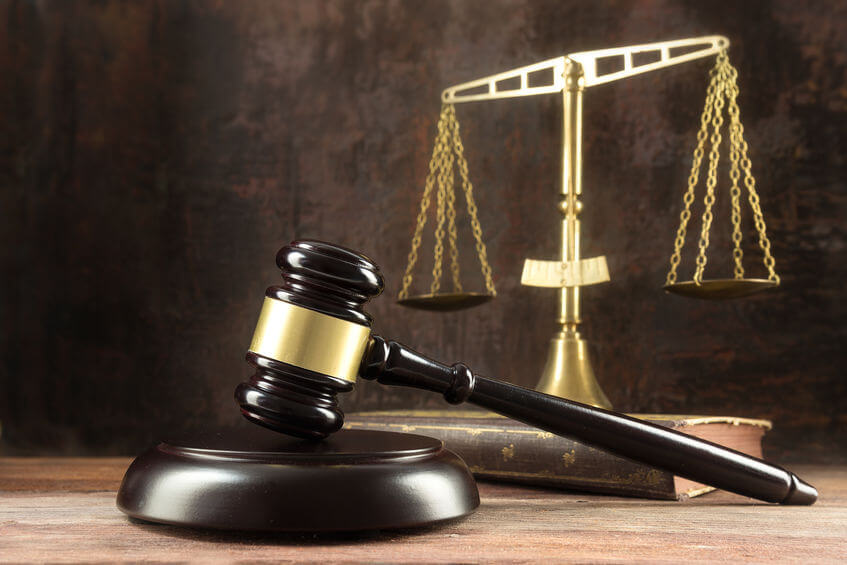
If you’ve suffered a personal injury, you may be the victim of someone else’s negligence. But what is negligence? How does negligence affect your case? How do you prove negligence in a personal injury lawsuit? Here are some of the basics of personal injury law from our attorneys at Lerner and Rowe Injury Attorneys.
The Definition
Negligence occurs when someone fails to behave in a careful and reasonable manner when someone of ordinary prudence would have behaved with such care under the same circumstances. When evaluating negligence in a personal injury lawsuit, there are 4 key elements (duty, breach, causation, damages), and there are 4 types of negligence (gross, comparative, contributory, and vicarious).
The Elements
When trying to prove negligence in a personal injury lawsuit, you must meet the following criteria if you hope to win your case.
1. Duty of Care
One of the first steps in proving a personal injury case is to establish the duty of care. A duty of care requires the defendant to act with reasonable care toward the plaintiff. A judge will decide if the defendant had a legal requirement to act with certain care and responsibility toward the plaintiff. For example, when driving a vehicle, the driver has a duty to drive safely so they do not hurt others. If a judge does not find that a reasonable person in the same circumstances would be required to act with a duty of care, a negligence case becomes more difficult to pursue.
2. Breach of Duty of Care
Once you establish the duty of care, the next step is to prove that the defendant breached the duty of care. A defendant breaches their duty of care when they act in a careless manner in which any reasonable person would not have acted. Continuing with the driving example, if the defendant made a left turn at a red light and therefore hit you, it can be established that any reasonable person would not have made that turn since the light was red. Therefore, the breach of duty of care occurred.
3. Causation
It is not enough to prove that a duty of care existed and that the duty of care was breached. Even if the plaintiff proves the defendant to be negligent, the defendant still must prove the existence of causation. There are two types of causation: “but for” causation, i.e. an inevitable causation, and “proximate cause” causation.
- “But for” causation is the most straightforward type of causation. It means but for the defendant’s actions, your injury would not have happened. For example, if someone swings a bat at you and causes you injury, there is a clear “but for” causation. In other words, your injury was an inevitable consequence of the defendant’s actions. Inevitability is an important thing to keep in mind, especially for people with pre-existing conditions. Pre-existing conditions make it more difficult to prove that the defendant’s actions alone caused injury.
- “Proximate cause” is a bit trickier. It means that the defendant’s actions did not necessarily occur during the time of your injury, but that their actions are the primary cause of your injury. In other words, their actions set off a chain reaction of events – like a row of dominoes – that lead to your injury. As an example, if a mechanic overlooks a faulty component in your vehicle during inspection, your car becomes dangerous to drive. Perhaps you get into an accident a few days later. Even if a few days have passed, if you can prove that the failure of the mechanic to diagnose and replace the faulty component caused you injury, proximate cause may be present. One thing to keep in mind, though, is the foreseeability of your injury. If your injury was clearly foreseeable, there is likely proximate cause. If your injury was not clearly foreseeable, proximate cause becomes more difficult to prove.
4. Damages
Even if the above steps are all proven, the plaintiff must still prove a legally recognized injury, such as physical harm, emotional trauma, or loss/damage of property. Presenting evidence such as photographs of the damages, medical bills, medical testimony, or surveillance videos of when the damages occurred can all help to establish a legally recognized injury. When damages are calculated, the court decides the best method to compensate the plaintiff. The most common methods of compensation for damages are through medical care, repair or replacement of property, and financial compensation.
The Types
In a personal injury case, the type of negligence can affect how much compensation for damages can be received. Because of this, the type of negligence that caused the injury must be determined. Here are the 4 types of negligence:
1. Gross Negligence
Gross negligence is the most severe form of negligence. It involves the defendant behaving with an absolute lack of safety for others. It is negligence to the extent that no reasonable person would have ever behaved in the same manner. An example is a surgeon performing surgery on the wrong organ because they grabbed the wrong patient file.
2. Comparative Negligence
Comparative negligence occurs when the plaintiff is at least partially responsible for the injury they suffered. In other words, the plaintiff and the defendant share responsibility for the injury. Depending on how responsible the plaintiff is for their injury, the compensation for damages could be greatly reduced.
3. Contributory Negligence
Contributory negligence means that if a plaintiff contributed at all towards their injury, they will not be able to collect any compensation. Even if the defendant is 99% responsible, the plaintiff will still not be eligible for compensation since they contributed 1% to the accident. Most states are abandoning contributory negligence laws in favor of comparative negligence laws. Sometimes, comparative and contributory negligence meld together in something called “mixed” negligence. This is where if the plaintiff is more than 50% responsible for his/her own injury, the compensation for damages may be significantly reduced, or not given at all.
4. Vicarious Liability
Vicarious liability means that the defendant is being held responsible for the actions of another person or animal. For example, if the defendant’s dog attacked someone and caused injury, the defendant will be held responsible. Another example is if the defendant’s child who is a minor commits a crime and causes serious injury. The defendant will receive responsibility for any damages their child caused.
Have More Questions About Personal Injury Law?
Contact Lerner and Rowe Injury Attorneys today! Our office is open Monday – Friday from 8am – 5pm, and you can call us 24/7 at 844-977-1900. If you wish to contact us online, check out our LiveChat feature. Consultations are free. We do not collect fees unless we win your case, so don’t hesitate. Call us today!



